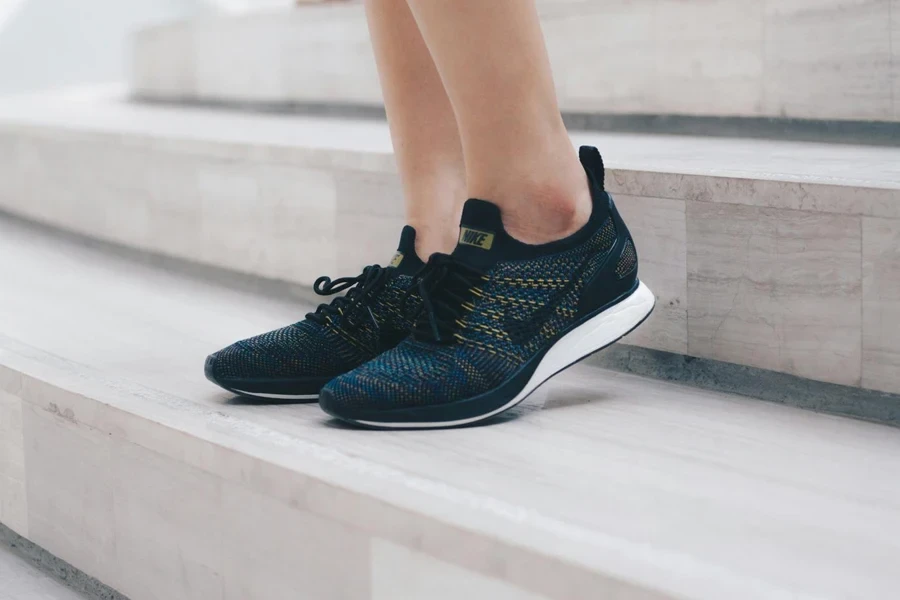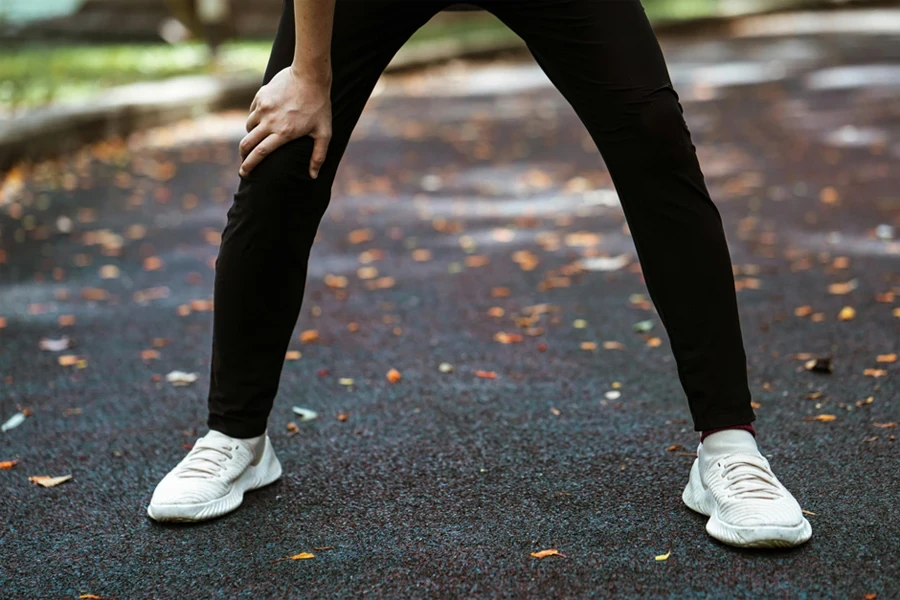Table of Contents
● Introduction
● Market overview
● Types of fitness walking shoes and their features
● Key considerations when selecting fitness walking shoes
● Conclusion
Introduction

Selecting the right pair of fitness walking shoes can significantly enhance both comfort and performance. This guide delves into current market trends, explores various shoe types, and outlines crucial criteria for choosing the ideal walking shoes. Arming customers with the knowledge to make informed decisions can significantly elevate their walking experience.
Market overview

Global market scale and growth rate
The global market for athletic footwear, which includes fitness walking shoes, reached approximately USD 83.82 billion in 2023. It is projected to grow at a compound annual growth rate (CAGR) of 5.2% from 2024 to 2032, reaching about USD 132.29 billion by 2032. This growth is driven by factors such as increasing disposable incomes, urbanization, and a growing emphasis on health and fitness activities globally.
Key market players and their shares
Major players in the athletic footwear market include Nike, Adidas, Puma, New Balance, and Skechers. Nike holds a dominant position in the market, leveraging its strong brand presence and continuous innovation in footwear technology. Adidas follows closely, known for its focus on performance and sustainability. Other notable players such as Puma and New Balance are also expanding their market shares through strategic partnerships and advancements in shoe technology.
Types of fitness walking shoes and their features

Lightweight walking shoes
Ideal for daily use
Lightweight walking shoes are designed for individuals engaging in regular walking activities. These shoes often feature materials like breathable mesh uppers that allow for ventilation, keeping feet cool and dry. The midsole is typically made from lightweight EVA foam, providing cushioning without adding extra weight. Some models include a minimal drop from heel to toe, promoting a natural stride and reducing the risk of overuse injuries.
Lightweight walking shoes provide flexibility with grooves in the outsole that mimic the foot’s natural movement. They are constructed to enhance agility and speed, ideal for fast-paced walking. The insoles often include antimicrobial properties to prevent odor buildup, and the overall design ensures a snug fit, reducing the chances of blisters.
Trail walking shoes
Designed for rough terrain
Trail walking shoes are engineered for durability and performance on uneven terrains. They feature robust construction with reinforced toe caps and abrasion-resistant materials to protect the feet from rocks and debris. The outsoles are made from durable rubber compounds with multi-directional lugs that provide superior traction on loose dirt, gravel, and mud.
Durability and stability factors
These shoes often include a rock plate in the midsole to shield the foot from sharp objects. The upper materials are typically treated with water-resistant coatings, and some models come with Gore-Tex linings for waterproofing. Stability is enhanced through the use of rigid heel counters and midfoot shanks, which prevent excessive foot movement and reduce the risk of sprains. Trail walking shoes may also incorporate ankle collars with extra padding for added support.
Cushioned walking shoes
Enhanced comfort for long walks
Cushioned walking shoes prioritize comfort, especially for those walking long distances on hard surfaces. These shoes usually feature advanced cushioning technologies such as gel inserts, air pockets, or proprietary foams like EVA or PU in the midsole, designed to absorb impact and reduce stress on joints.
Shock absorption and support features
The cushioning systems are often paired with contoured footbeds that provide arch support and promote proper alignment of the foot. The heel area may include additional padding or cushioning units to enhance shock absorption, particularly beneficial for those with heel pain or plantar fasciitis. The upper materials are designed to provide a secure yet comfortable fit, often incorporating stretchy knit fabrics or padded collars to accommodate foot swelling during long walks.
Key considerations when selecting fitness walking shoes

Fit and comfort
Importance of proper sizing
Proper sizing is crucial for ensuring comfort and preventing injuries while walking. A well-fitted shoe should provide adequate space in the toe box, allowing the toes to move freely without rubbing against the shoe. It’s important to measure both feet since one foot may be slightly larger than the other. Ensuring a snug fit around the heel and midfoot prevents slippage and enhances stability during movement.
How to test for a good fit
To test for a good fit, wear the socks one plan to use and try on the shoes later in the day when feet are slightly swollen. Stand and walk around to check for any pressure points or discomfort. Ensure there is about a thumb’s width of space between the longest toe and the end of the shoe. The shoe should feel snug but not tight, and the heel should not slip when walking.
Support and stability
Features to look for in stable shoes
Stable walking shoes often feature a firm heel counter that supports the heel and prevents excessive movement. A wide base and proper arch support help maintain foot alignment and reduce the risk of overpronation or supination. Midsole materials such as dual-density EVA or PU foam provide both cushioning and structural support, enhancing stability.
Benefits of supportive footwear
Supportive footwear distributes body weight evenly across the foot, reducing pressure points and minimizing the risk of injuries such as plantar fasciitis or shin splints. Proper support can also improve walking efficiency by promoting natural foot motion and reducing muscle fatigue. Stability features in walking shoes help prevent ankle sprains and provide a secure footing on various surfaces.
Cushioning and durability
Material considerations
The choice of materials significantly impacts the cushioning and durability of walking shoes. Midsoles made from EVA (ethylene-vinyl acetate) foam or polyurethane offer ideal shock absorption, reducing impact on the joints. Outsoles crafted from durable rubber compounds provide traction and wear resistance, essential for long-lasting performance. Breathable mesh uppers enhance ventilation, while synthetic overlays offer additional support and structure.
Long-term benefits of quality shoes
Investing in good-quality walking shoes with proper cushioning and support can prevent common foot problems and improve overall comfort. Advanced cushioning technologies, such as gel inserts or air pockets, absorb shock and reduce stress on the feet and lower legs. Durable construction ensures that the shoes maintain their supportive properties over time, providing consistent performance and reducing the need for frequent replacements. Good-quality walking shoes can also enhance walking efficiency, promote better posture, and encourage regular physical activity.
Conclusion

Selecting the right fitness walking shoes involves understanding current market trends, recognizing the different types available, and considering essential factors such as fit, support, and durability. By making an informed choice, businesses can enhance their customers’ walking experiences, ensuring comfort, performance, and long-term foot health. This comprehensive approach helps businesses cater to the diverse needs of their clientele, fostering satisfaction and loyalty.




